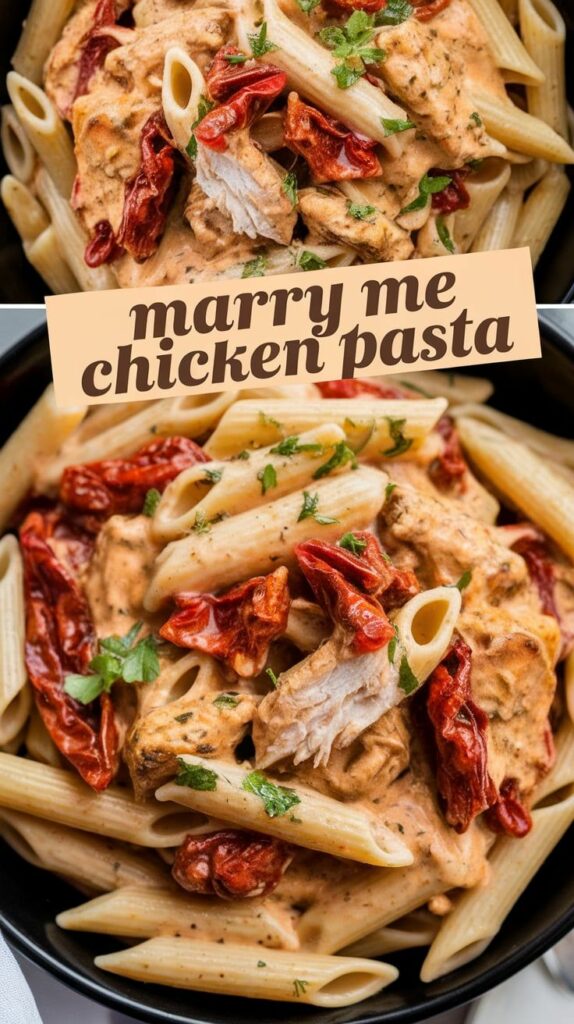I’m excited to share my favorite refried beans recipe that brings the heart of Mexican cuisine straight to your kitchen. This authentic Mexican recipe is more than just a side dish – it’s a culinary experience that transforms simple ingredients into a rich, creamy delicacy that will elevate any meal.
Refried beans are a staple in Mexican cooking, packed with incredible flavor and versatility. My recipe captures the traditional preparation method that has been passed down through generations. Whether you’re preparing a weekend family dinner or looking to spice up your meal prep, these refried beans will become a go-to recipe in your cooking repertoire.
What makes this refried beans recipe special is its simplicity and depth of flavor. I’ll walk you through each step, ensuring you can create restaurant-quality beans right at home. From selecting the perfect beans to mastering the mashing technique, you’ll learn the secrets to creating an authentic Mexican side dish that’s both delicious and nutritious.
Get ready to transform your cooking with this incredible refried beans recipe that brings the vibrant taste of Mexico directly to your dining table.
Why I Love Making Homemade Refried Beans
My journey with homemade refried beans started as a culinary adventure that quickly became a kitchen staple. Store-bought versions simply cannot compare to the rich, authentic flavor of homemade refried beans crafted with care and fresh ingredients.
The benefits of homemade beans extend far beyond taste. By preparing refried beans in my own kitchen, I gain complete control over the ingredients and nutritional content. No mystery additives or preservatives – just pure, wholesome goodness.
- Superior flavor control
- Healthier ingredient selection
- Cost-effective alternative to canned beans
- Customizable seasoning options
Making homemade refried beans allows me to experiment with different bean varieties and spice combinations. Pinto beans work wonderfully, but I’ve discovered that black beans and even kidney beans create delightful variations. The process is surprisingly simple and incredibly rewarding.
From a budget perspective, homemade refried beans are a game-changer. A single batch can cost a fraction of pre-made versions while yielding significantly more servings. The economic and culinary benefits make this recipe a true winner in my kitchen.
Essential Ingredients for Perfect Refried Beans
Creating authentic refried beans starts with selecting the right ingredients. My secret to delicious refried beans lies in carefully choosing each component to build layers of incredible flavor. Let me walk you through the key refried beans ingredients that will transform your dish from ordinary to extraordinary.
Choosing the Right Type of Beans
When it comes to the best beans for refried beans, pinto beans reign supreme. These creamy, soft beans are the traditional choice in Mexican cuisine. I recommend using dried pinto beans for the most authentic taste and texture. Black beans offer a delicious alternative for those wanting to experiment.
- Pinto beans (primary recommendation)
- Black beans (alternative option)
- Dried beans preferred over canned
Must-Have Seasonings and Spices
The magic of refried beans comes from its robust seasoning. My go-to spices create a flavor profile that will make your taste buds dance:
- Garlic (fresh or powdered)
- Ground cumin
- Salt
- Black pepper
- Onion powder
Optional Flavor Enhancers
For those looking to elevate their refried beans, I suggest adding some exciting optional ingredients:
- Bacon fat for extra richness
- Diced jalapeños for heat
- Fresh cilantro
- Queso fresco
Remember, the key to incredible refried beans is balancing these ingredients with care and love. Each component plays a crucial role in creating that perfect, creamy texture and bold flavor that will have everyone asking for seconds.
Kitchen Tools and Equipment You’ll Need
Preparing delicious refried beans requires some essential refried beans kitchen tools that can make your cooking experience smooth and enjoyable. I’ve carefully selected the most important cooking equipment for beans to help you create a perfect dish every time.
The right kitchen tools can transform your bean-cooking process from challenging to simple. Let me share the must-have equipment that will elevate your refried beans game.
- Large Pot or Dutch Oven: Critical for initial bean cooking and soaking
- Sturdy Potato Masher: Helps create the classic refried beans texture
- Heavy-Bottomed Skillet: Ensures even heating and prevents burning
- Food Processor: Alternative method for smooth bean consistency
- Wooden Spoon: Perfect for stirring and preventing sticking
When selecting your cooking equipment for beans, invest in quality tools that can withstand high temperatures and frequent use. A cast-iron skillet works wonderfully for the final frying stage, providing excellent heat distribution.
| Tool | Primary Function | Recommended Material |
|---|---|---|
| Large Pot | Bean Cooking | Stainless Steel |
| Skillet | Frying Beans | Cast Iron |
| Masher | Texture Creation | Stainless Steel/Wooden |
Pro tip: While specialized tools can help, don’t worry if you don’t have everything. Creativity in the kitchen means adapting with what you have available!
My Tried and Tested Refried Beans Recipe
Learning how to make refried beans from scratch can transform your home cooking. My homemade recipe brings authentic flavor and creamy texture that store-bought versions can’t match. I’ll walk you through the refried beans recipe steps that guarantee delicious results every time.
Bean Preparation Essentials
Preparing beans requires careful attention. I recommend using dried pinto beans for the most authentic taste. Start by sorting through the beans to remove any stones or damaged kernels. Rinse them thoroughly under cold water before beginning the soaking process.
- Choose high-quality dried pinto beans
- Sort and remove any imperfect beans
- Rinse beans in cold water
- Soak beans overnight for best results
Cooking Beans to Perfection
Cooking beans until tender is crucial for a successful refried beans recipe. I drain the soaked beans and place them in a large pot with fresh water. Simmer on low heat until beans are soft but not mushy – typically around 90 minutes.
Mashing and Seasoning Techniques
The magic happens during mashing. I use a potato masher to create a rustic texture, adding minced garlic, cumin, and salt for authentic flavor. For extra richness, I recommend cooking the mashed beans in a skillet with a small amount of lard or vegetable oil.
- Mash beans to desired consistency
- Season with garlic and spices
- Cook in a hot skillet with oil
- Stir frequently to prevent burning
Tips for Achieving the Perfect Texture
Mastering the refried beans texture can transform an ordinary dish into a culinary masterpiece. Creating creamy refried beans requires patience and technique. I’ve learned through years of cooking that achieving the right consistency is both an art and a science.
Let me share my top strategies for creating the most delectable refried beans texture:
- Start with well-cooked, soft beans that break down easily
- Use a potato masher or immersion blender for smooth results
- Add cooking liquid gradually to control moisture
- Cook beans in small batches for more consistent texture
When working on your creamy refried beans, consider these key techniques:
- Mash beans while they’re still hot for easier blending
- Use lard or vegetable oil to enhance smoothness
- Stir constantly to prevent sticking and ensure even texture
Different textures suit various preferences. Some home cooks enjoy chunky refried beans, while others prefer a silky-smooth consistency. The secret is experimenting and finding your perfect balance.
| Texture Style | Mashing Technique | Liquid Addition |
|---|---|---|
| Chunky | Partial mashing | Minimal liquid |
| Smooth | Complete blending | More cooking liquid |
| Creamy | Immersion blender | Moderate liquid |
Remember, practice makes perfect when developing your ideal refried beans texture. Don’t be afraid to adjust and experiment until you find your signature style!
Common Mistakes to Avoid When Making Refried Beans
Creating the perfect refried beans can be tricky. I’ve learned through years of cooking that understanding potential refried beans mistakes is key to making a delicious dish. Troubleshooting refried beans requires attention to detail and knowledge of common pitfalls.
Let me share some critical errors home cooks often make when preparing this classic Mexican side dish:
Temperature Control Challenges
Maintaining the right temperature is crucial when making refried beans. Here are the most common temperature-related mistakes:
- Cooking beans on too high heat, which causes burning and bitter taste
- Using low heat that prevents proper texture development
- Inconsistent heat leading to uneven mashing and texture
Seasoning Pitfalls
Seasoning can make or break your refried beans. Watch out for these common errors:
- Over-salting, which destroys the bean’s natural flavor
- Under-seasoning, resulting in bland beans
- Using stale or expired spices that lack potency
Storage and Reheating Errors
Proper storage and reheating are essential for maintaining your refried beans’ quality:
- Storing beans at room temperature for too long
- Reheating beans multiple times, which degrades texture
- Not using an airtight container for refrigeration
By avoiding these common refried beans mistakes, you’ll be well on your way to creating a delicious and authentic side dish that everyone will love.
Creative Ways to Serve Your Refried Beans
Refried beans are incredibly versatile, transforming from a simple side dish to the star of multiple refried beans dishes. I love experimenting with different serving styles that showcase their rich, creamy texture and robust flavor.
When serving refried beans, consider these mouthwatering options:
- Classic Mexican Favorites
- Spread on warm tostadas
- Rolled into hearty burritos
- Layer inside crispy quesadillas
- Innovative Serving Suggestions
- Create a zesty bean dip for chips
- Use as a base for vegetarian tacos
- Stuff into jalapeño poppers
My favorite breakfast trick is using refried beans as a protein-packed morning spread on toast. For lunch, I’ll mix them into salads or use them as a sandwich spread. Dinner options are equally exciting – they make an excellent side for grilled meats or as a topping for nachos.
Pro tip: Experiment with different garnishes like fresh cilantro, crumbled queso fresco, or a dollop of sour cream to elevate your refried beans from good to absolutely irresistible.
Storage and Meal Prep Recommendations
When it comes to storing refried beans, proper storage is key to maintaining their delicious flavor and texture. I recommend using airtight glass containers or sealed plastic containers for refrigeration. These beans typically last 3-5 days in the refrigerator when stored correctly, making them perfect for refried beans meal prep throughout the week.
Freezing is an excellent option for longer-term storage. I divide my refried beans into individual portion sizes before freezing, which makes reheating much easier. Use freezer-safe containers or heavy-duty freezer bags, removing as much air as possible. Frozen refried beans can last up to 3 months without losing their quality, giving you a quick protein-packed option for busy weeknights.
My favorite meal prep strategy involves preparing a large batch of refried beans on Sunday and incorporating them into multiple dishes during the week. Try using them as a base for breakfast burritos, topping for salads, or as a side dish with grilled proteins. When reheating, add a splash of water or broth to restore moisture and prevent the beans from drying out.
Pro tip for refried beans meal prep: Always let the beans cool completely before storing, and reheat gently over low heat or in the microwave. This helps preserve their creamy texture and prevents them from becoming tough or burnt. With these storage techniques, you’ll always have a delicious and versatile bean dish ready to enjoy.



